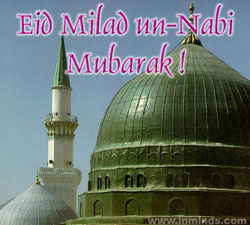Introduction
The festival of Eid-e-Miladulnabi is also popularly
known as Barah Wafat the twelfth day. The day
commemorates the birth and also the death of Prophet
Mohammed. Bara Wafat falls on the twelfth day of the
third month Rabi- ul- Awwal in September/October. Here,
Barah or twelve, stands for the twelve days of the
Prophets sickness.

The celebrations of birthday are subdued as the day also
happens to be the death anniversary of Prophet Muhammad.
The day is marked by holding religious discourses,
reading the Holy book of Quran and giving alms to the
poor.
Prophet Mohammed
Prophet Mohammed was born in 571 A.D on April 12th, in
Mecca in Arabia. Circa 610 AD, Prophet is said to have
gained revelations from Allah through the angel Gabriel
that he was His Messenger. In 622 AD Mohammed along with
his followers went to Medina.
This flight from Mecca to Medina is known as Hijrah and
marks the beginning of the Islamic era. By 630 AD, Islam
came to be accepted as a religion and Muhammad as ruler
by a large number of people. However, in 632 A.D.
Muhammad led the pilgrimage to Mecca, preached his
farewell sermon and died soon after.
Celebrations of Eid-ul-Milad
Barah Wafat does not call for any kind of grand
celebrations as the birth day and death anniversary of
Prophet Mohammed coincidently falls on the same day.
Hence, Muslims spend this period in spiritual
activities. Special prayers meets and discourses on
Quran are also organised in mosques to mark the day of
Milad.
Learned men and scholars focus their sermons on the life
and teachings of Prophet Mohammed and inspire people to
follow the path of good life as shown in Quran. Hence,
the festival gives a chance to people to introspect
their deeds and think of ways of being a better person.
Besides, in some places hymns are sung and elegies or
marsiyas are recited in memory of the last days of the
Prophet. Acts of charity are also done by devout Muslims
and alms are distributed to the poor and the needy.
Later, people invite friends and relatives for a feast.
In some mosques, however, a ‘sandal rite’ ceremony is
performed over the symbolic foot prints of the Prophet
engraved in a stone. A stone imitation of buraq the
horse on which Prophet Mohammed is said to have ascended
to his heavenly abode is placed near the foot prints and
anointed with sandal paste or scented powder. Besides,
the house and casket containing this are elaborately
decorated.
|